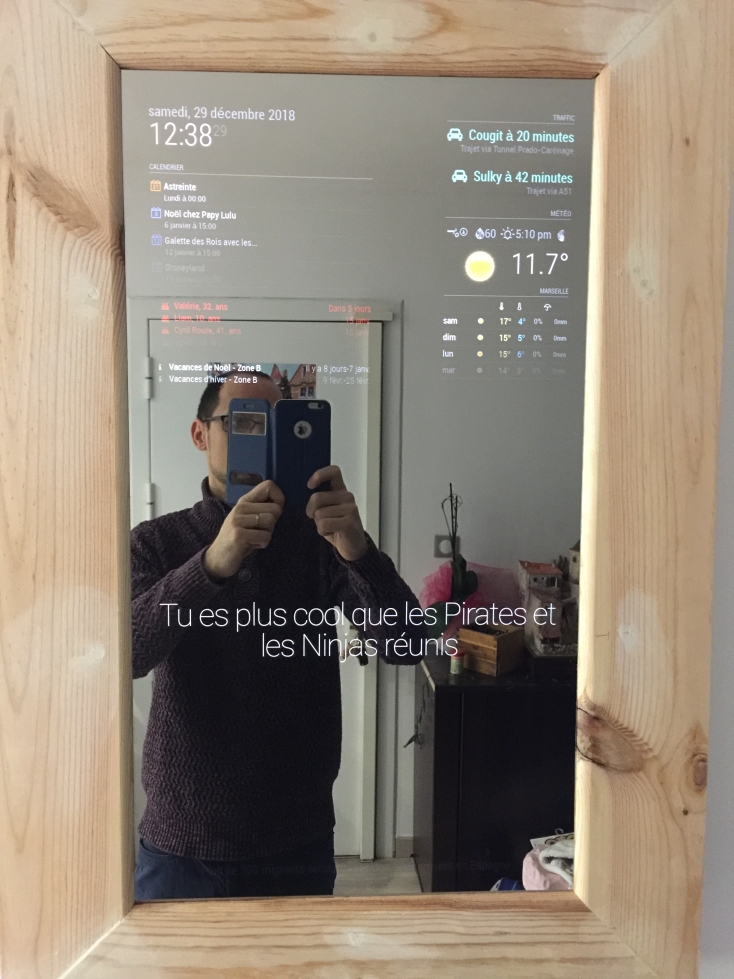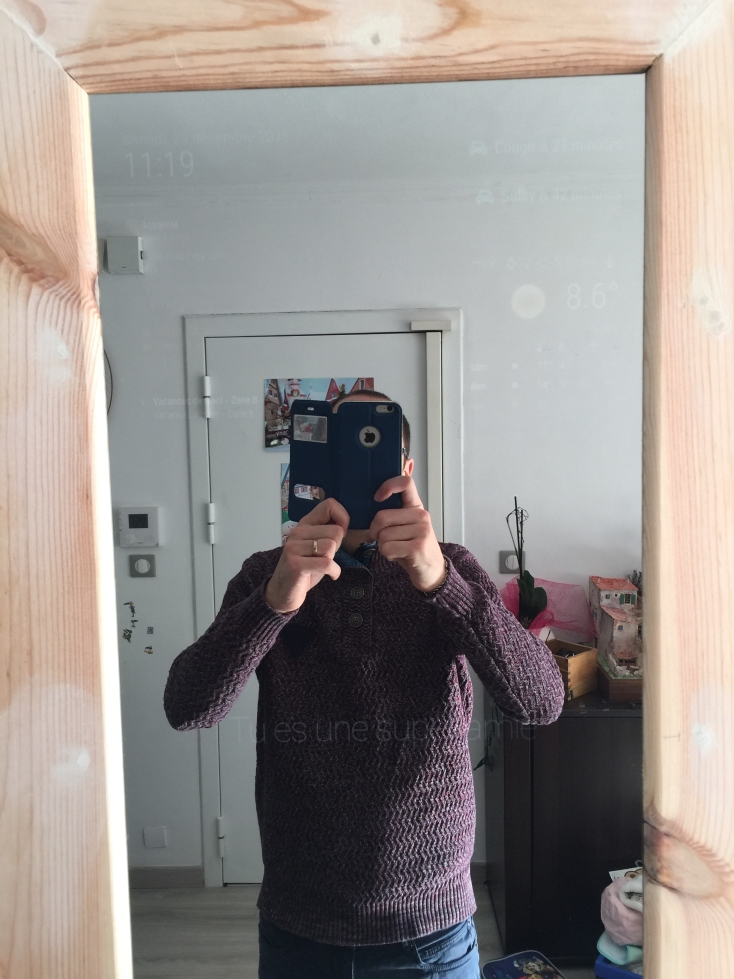Read the statement by Michael Teeuw here.
Sun VS mirror
-
Hi all,
First sorry for my english. (I’m french :p )
I just finished assembling my magic mirror.
And I realize that during the day I can not see anything because of the high brightness of the room.I bought this type of glass : https://www.brigla-shop.de/smart-mirror-674.html
Is there another type of mirror more suitable ?because currently, I’m so disappointed.
SHUTTERS CLOSED :

SHUTTERS OPEN:

-
It depends on the 8%-value of the transmission of the mirror. If you select a different mirror type (with higher % ) you will see it better in the sunlight. But then you will see probably the backlight of the screen through the mirror with closed shutters.
-
Thank you for these responses.
I have to choose 12% then ?And go from 6mm to 4mm ? Would it be better ?
-
I got 2 years ago some samples with diferrent transmission ratios. Was very helpful for me before ordering something with the try and error approach ;-)
I’m not sure if the depth of the mirror does matter in this regard. I using the thin version due to the lower weight.
-
I need Pilkington MirroView 50/50. That’s it ?
It remains to find a reseller.Thx Patrick.
-
If the transmission ratio is too high you will just have some kind of “mirror glance”. The mirror glas has to fit to your environment. So nobody can tell you if this glas is fitting exactly. Maybe you get a sample of it upfront.
-
Frankly, I think it’s better to use without mirror itself. :D
-
@thymon I went for 50/50 as I want to watch tv from it as well, if the environment is bright 50/50 is the glass, I’m in the UK had no problems finding a company to supply the pilkinton glass
-
Thickness doesn’t really matter.
But no, you can’t get glass that works perfectly in all lighting conditions, you basically have to decide where the mirror goes and choose type frome there.
My usual recommendations are :
Dark rooms, with limited/dimmed lighting go with 4-10% light transmission (not really recommeded at all, but this limits bleed through of the monitors backlight). Here you have the mirropane series that has models from 3% (chrome), 8% (chrome spy) and regular mirropane at 10%. And do note the chrome series has a “darker” reflection than mirroview that is brighter/more silver.
Normal lit rooms, without direct sunlight go with 12-20% light transmission (sweet spot is 12% when balancing readability and backlight bleed through).
Here you can find the regular pilkington mirroview at aprox. 20%Public rooms, with much daylight or brightly lit places I would go with 30-50% light transmission, the drawback is however that you often see the screen behind it really clearly and thus loses much of the magic. But as you have noticed, practically it has to be around 50% to be used in daylight, or as stated above, just as a “hidden” tv. Here you get the mirroview 50/50.
A quck “fix” for low lighttransmission is to bulk up the text and symbols (use bold in a large font), it helps a little.
And when it comes to the reflection % get as high as possible, a normal mirror has about 85-98% reflection. Most two way mirrors has around 60%, often lower. Reflection is oftenly not considered when building a smart mirror, but it should be.
-
FWIW, the professionals at TwoWayMirrors.com sell two way glass specifically for smart mirrors at 30% transparent. I have three of their mirrors and I’m quite pleased with them.
